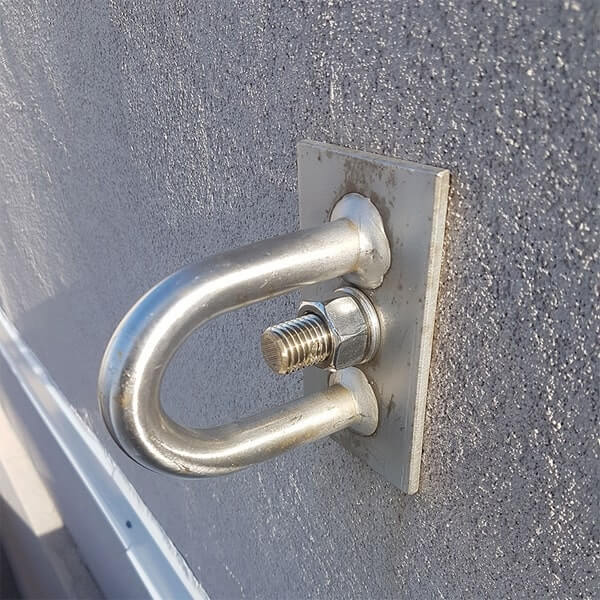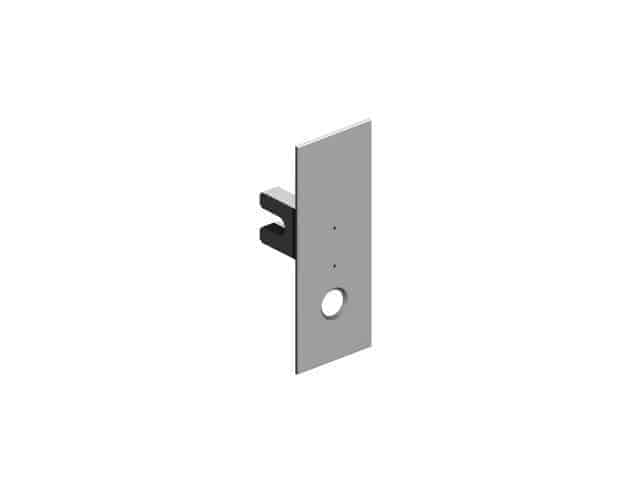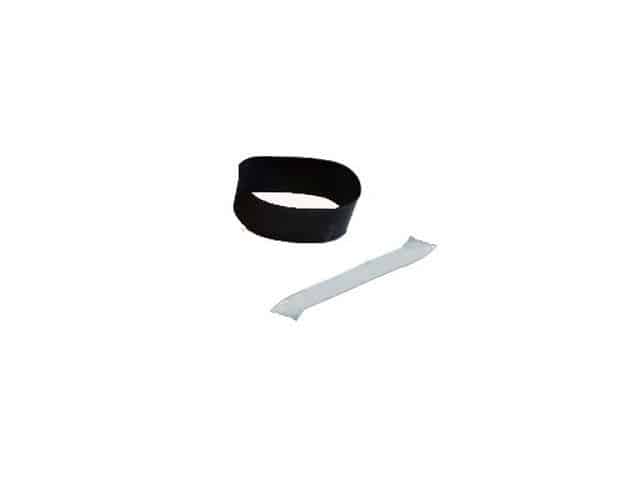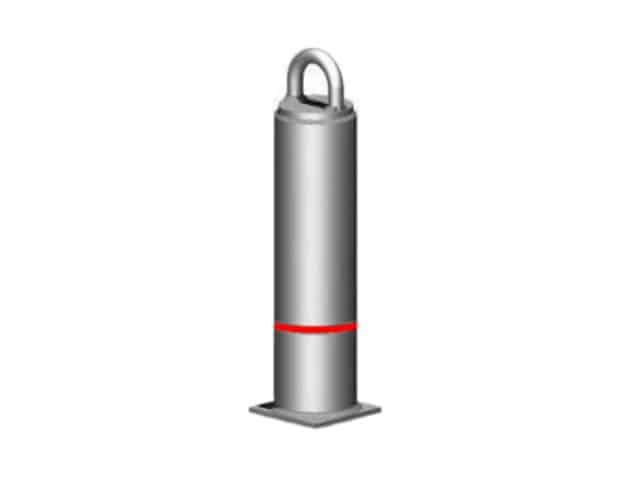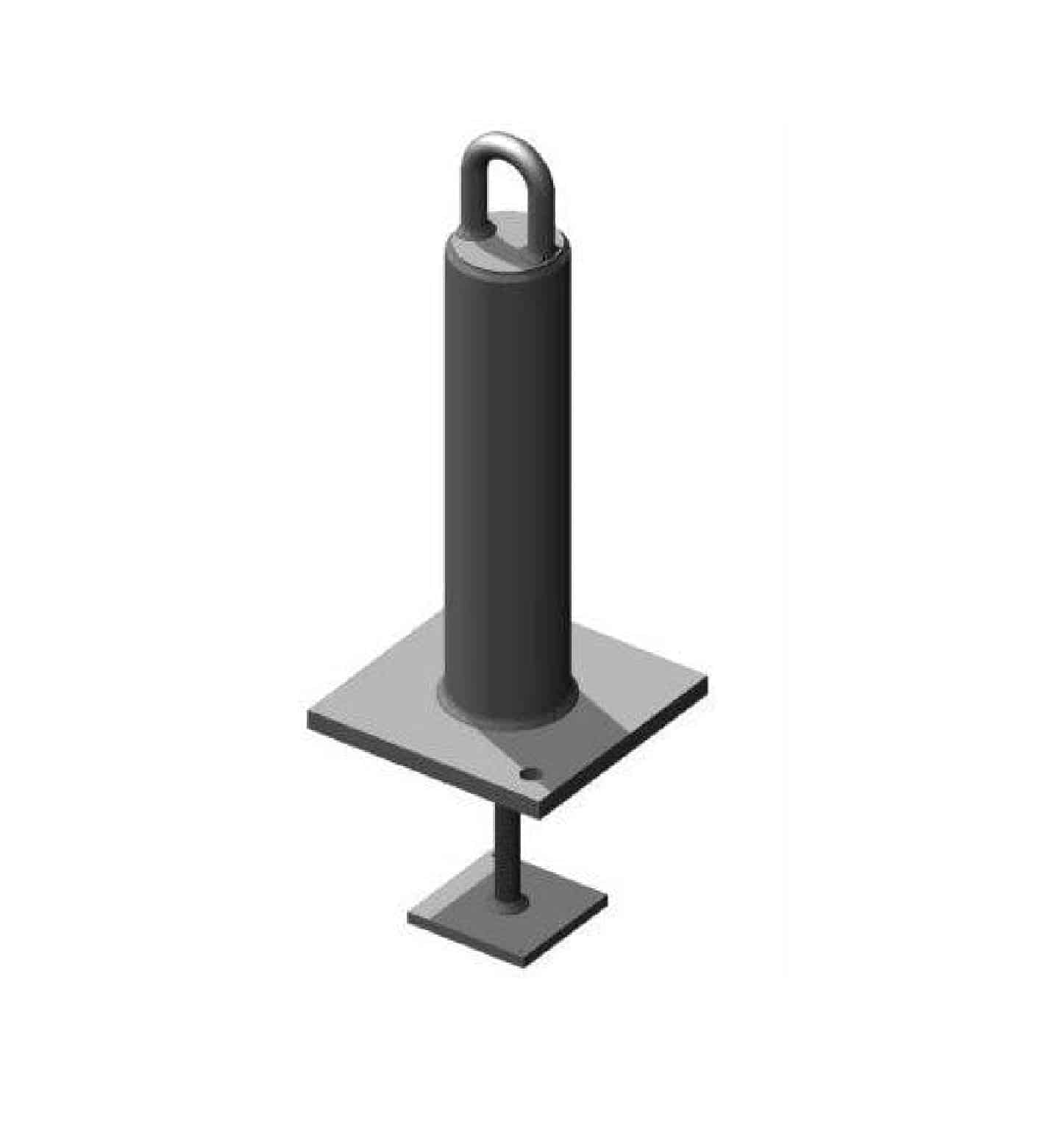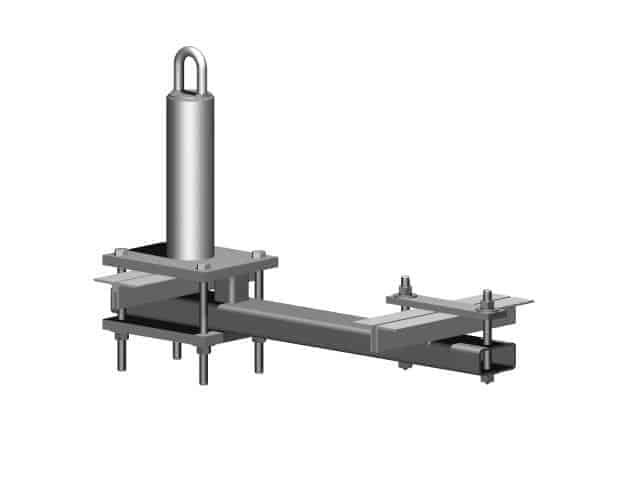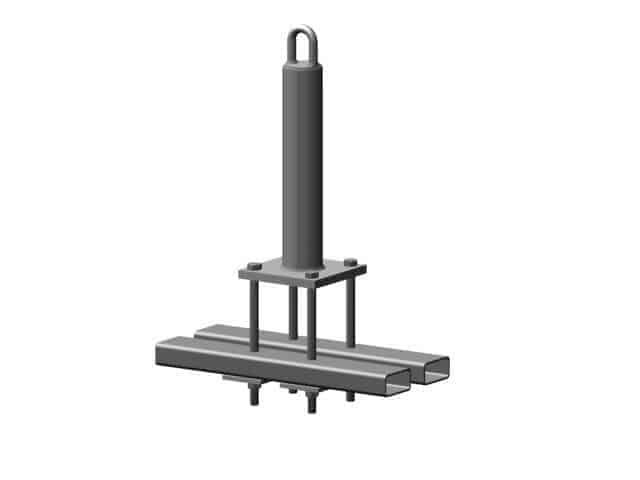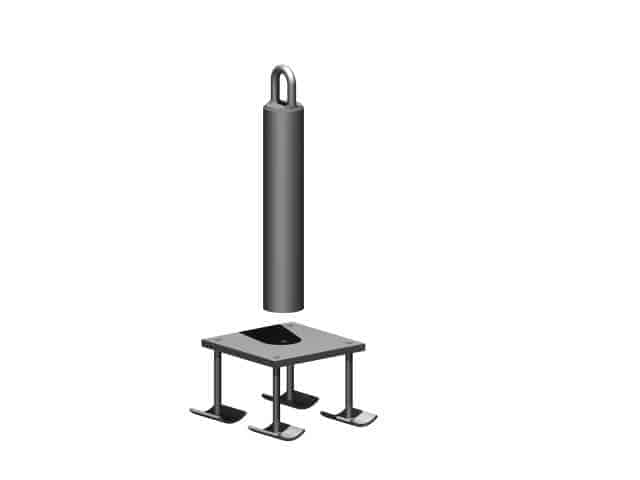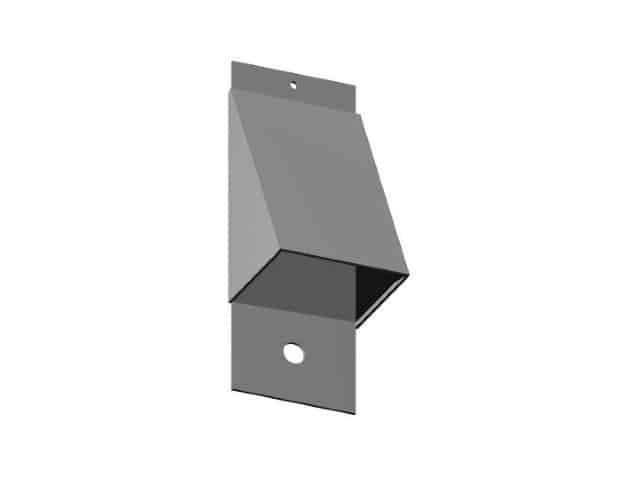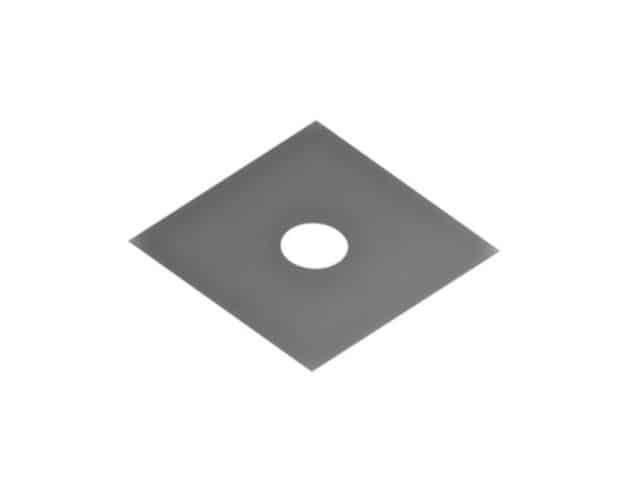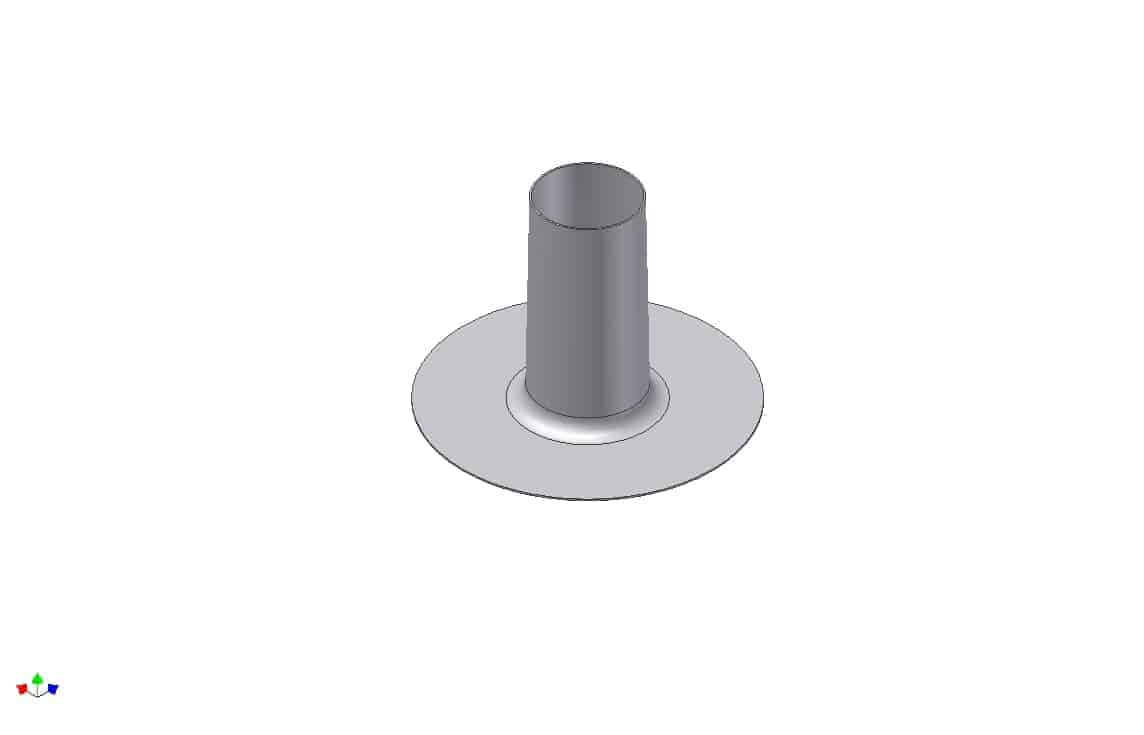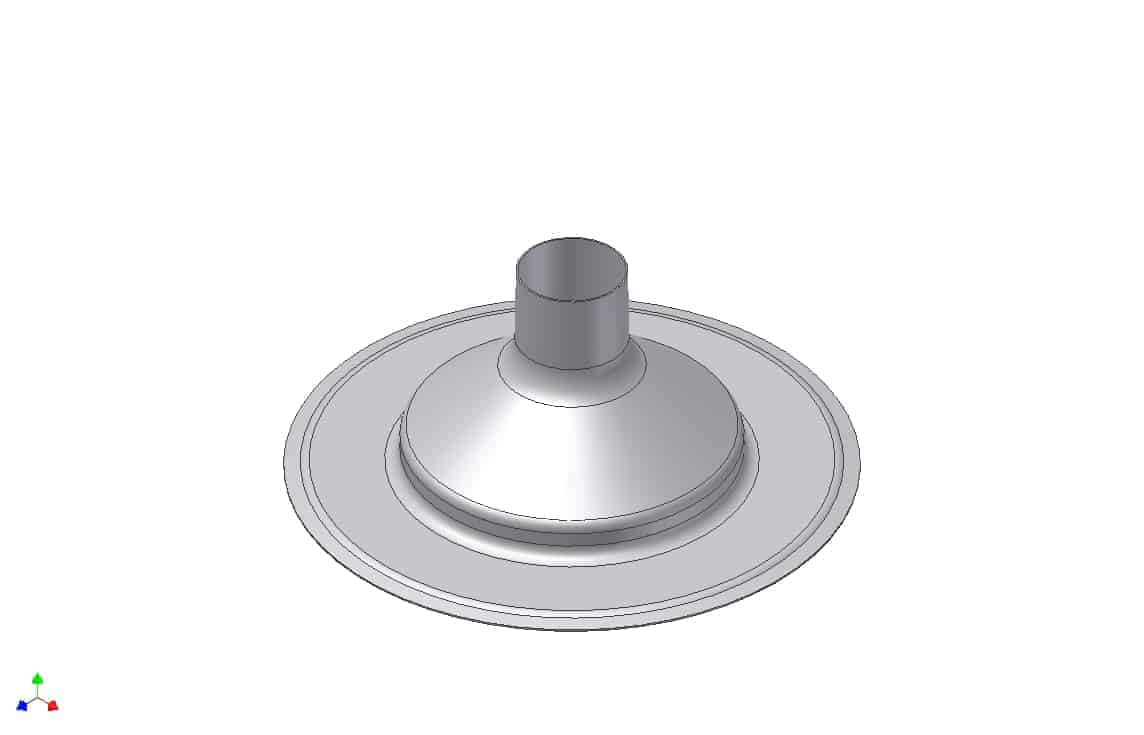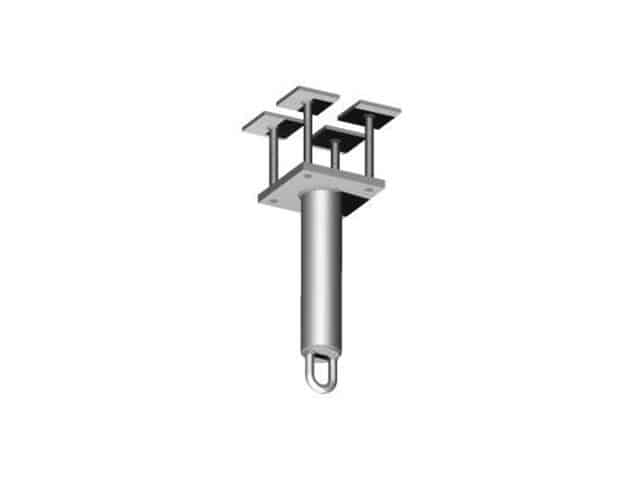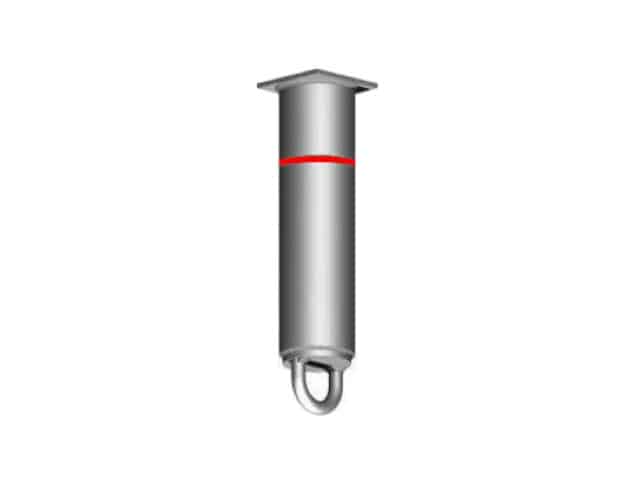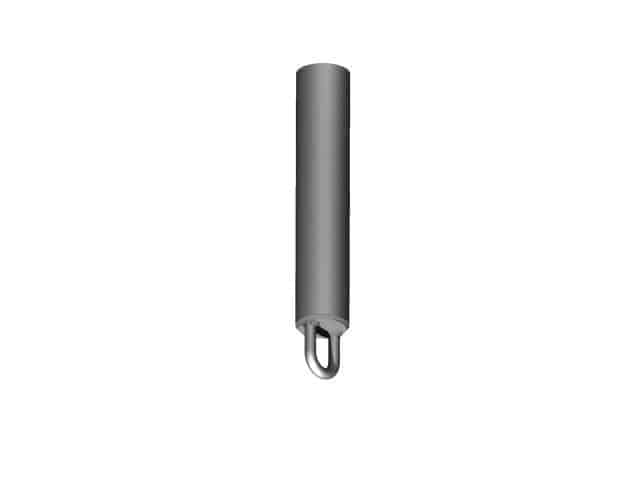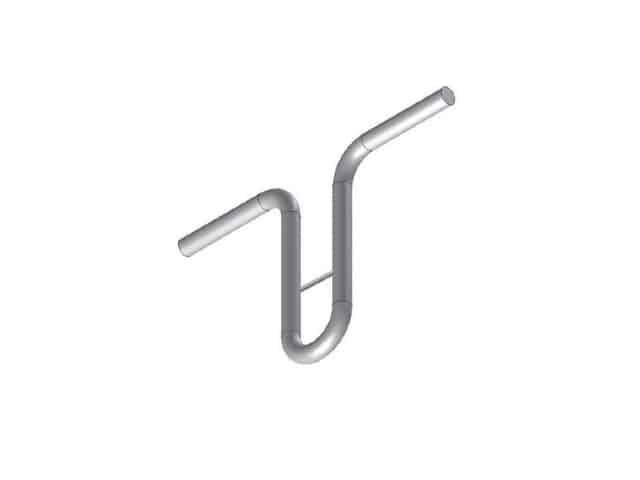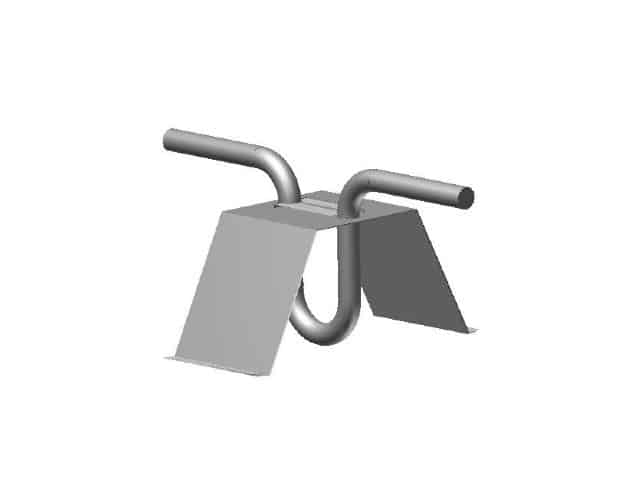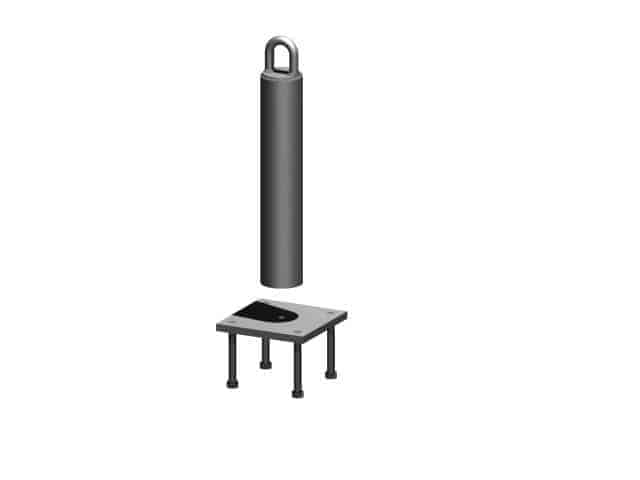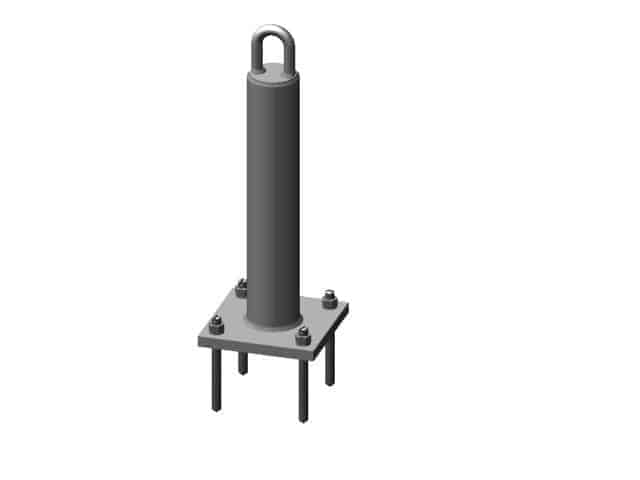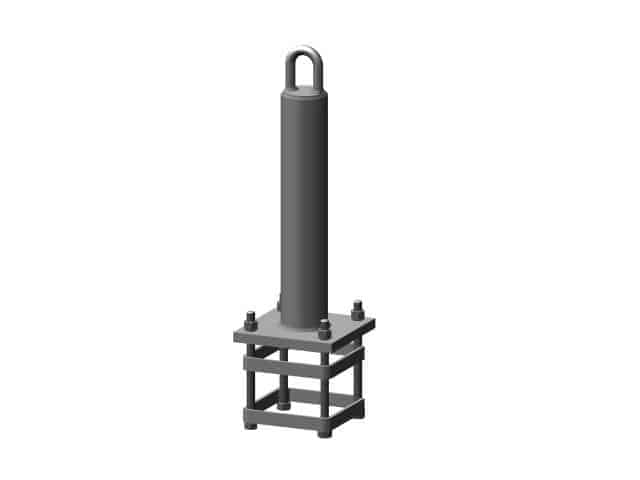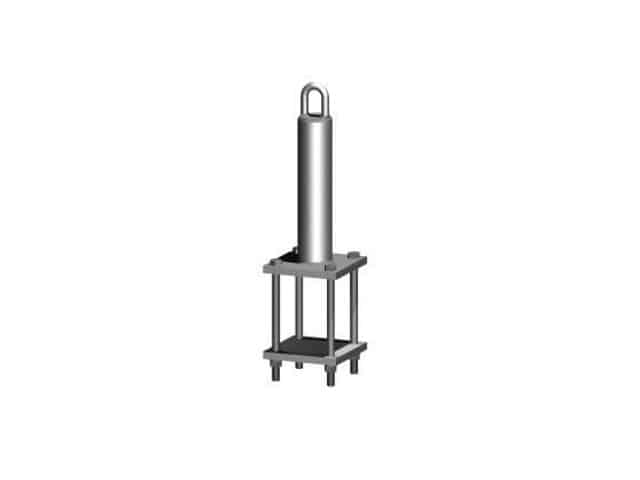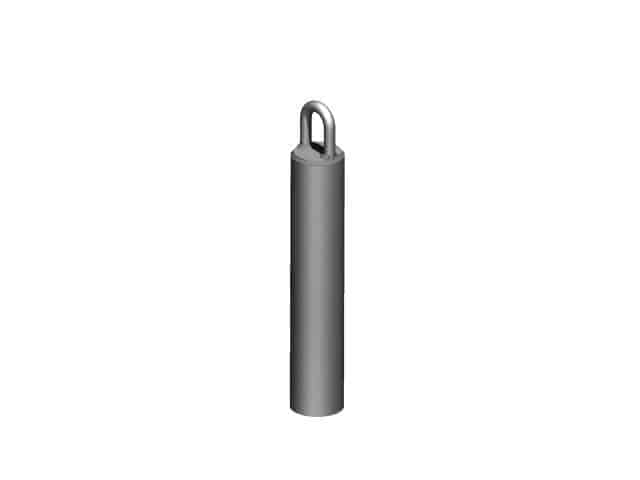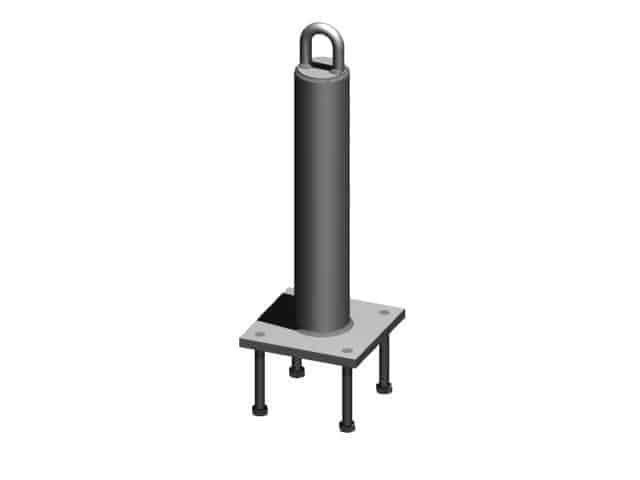Permanent roof anchors are the most installed piece in the fall protection and window washing equipment industry. This article will help you better understand what a roof anchor is and why it is so popular.
A permanent roof anchor is a basic post with a u-bar attached to the top. Looks can be deceiving, and when it comes to roof anchors, there is much more than meets the eye because they can be referred to by several different names, as explained in our guide to roof anchors.
Factors to consider when designing, manufacturing, and installing roof anchors
First, we must know the intent of the design- whether it's to protect facade maintenance workers suspended off the lines or act as a tie-back anchor for rooftop workers. A typical Pro-Bel anchor is designed to meet a 1,000 lbs static load and an ultimate load of 5,000 lbs.
The static load is the allowance for a constant fixed load to be placed on the anchor. The ultimate load is a one-time force in which it can bend but may not fracture or detach. Regulations for how anchors are laid out depend on region, given the offset angle for suspension varies from 25 to 30 degrees.
Installing a roof anchor system
When setting up a roof anchorage system, you first need to know how the anchor will be attached to the structure. The base is customized to match the structure be it wood, cement, steel, prescient, etc. The base can be welded into the I-beams, cast in place, bolt through, adhesive, or wrap-around.
Size of roof anchor
Next, you need to know what size you want the anchor to be. Standard Pro-Bel sizes include 12″, 15″ and 18”. We can make anchors larger or smaller; however, changes to the standard design may be needed, such as increasing the outside diameter of the anchor if it must be taller. If you do not know how tall your anchor must be there is a general rule of thumb; the anchor should typically be 8″ above the finished roofing material to allow for flashing.
What does a permanent roof anchor look like?
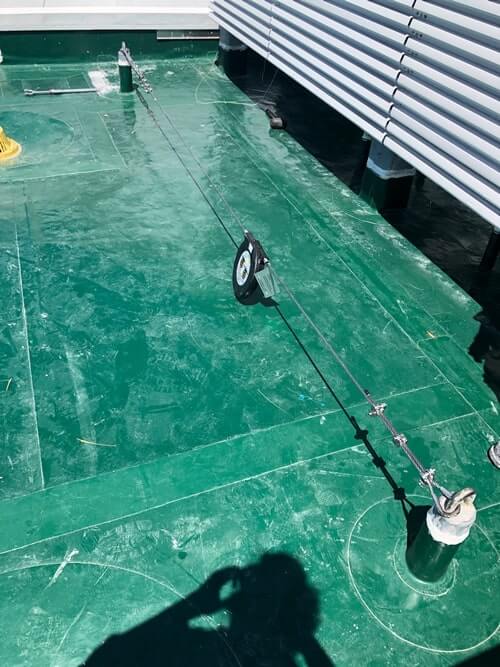
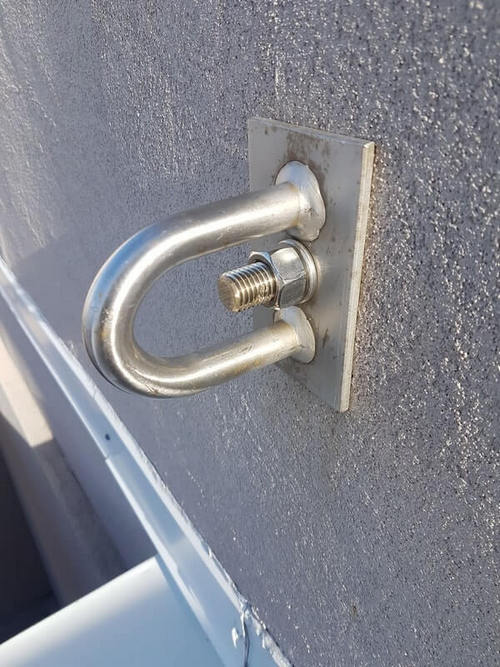
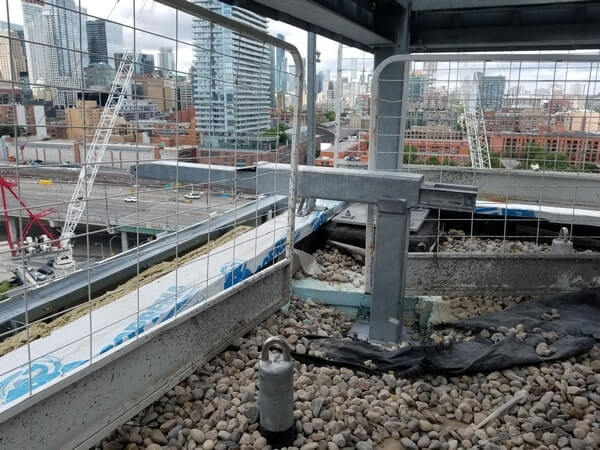
Several anchors and some additional products, such as wall anchors, horizontal lifeline components, and rigging sleeves, are shown above.
Get in touch with our roof anchor experts who will help you find and install the perfect roof anchor for your building's specifications!
Roof anchor bases
All permanent roof anchors' bases are customized to meet the building's structure. Whether the rooftop structure is wood, steel, concrete, or prescient, Pro-Bel has a base to match it. Other factors such as the structure's width will be considered to customize the roof anchor accordingly.
Wrap Around: These anchors are applied to retrofits and, as per their name, they wrap around existing structure for installation. Reinforcement is added to the base if need be.
Cast in Place: When working with concrete structures, a cast-in-place base is the most cost-effective choice. The base plate is fully embedded in concrete during installation, using less material to manufacture. Plus, these anchors can usually be installed by the roofer, saving on professional installation costs.
Bolt-through: Customizable bolt-through anchors are a breeze to install. They're used on curved steel or existing concrete and steel structures, providing an alternative to welding. With bolt-through roof anchors, the accessibility to the underside of the slab must be considered. This anchor needs to avoid piercing through dry walls and plaster ceilings, but with the right precautions, installation is straightforward.
Welded: Weldment anchors are used on steel structures primarily in new constructions; however, they can be used for retrofits with extreme caution and a fire watch in place. These anchors are welded directly into the structural steel beams. For that reason, the anchorage layout design must accommodate the structure by only placing them on the I-beams.
Weld to embedded plate: This anchor is typically used in hollow slabs in new construction. The cast in embed structure is cast into adjacent “cores,” and a weldment anchor (without base plate) is later welded to the top of the embed plate. These anchors facilitate easy and cost-effective on-site installation.
What is a permanent roof anchor used for?
All permanent roof anchors serve a single purpose: to protect workers from falls. Building owners must provide workers and contractors with a workplace free from recognized hazards. Such hazards may include window cleaning from a height or simple maintenance, such as cleaning gutters. When workers may be exposed to a fall, they must be provided with adequate equipment for protection.
How does a roof anchorage system work?
In window cleaning, a minimum of two anchors will be used for each worker. One anchor will support the worker directly tied back to their harness. More anchors will be used to support their suspended equipment, whether it be a Bosan’s chair, powered platform, or other form of suspended equipment. An anchor may also be part of a horizontal lifeline system in which cable is passed through anchors and connected at end anchor points. In this scenario, the worker is attached to the cable opposed as to the anchor.
How is a window washing/fall protection system designed?
Pro-Bel offers free design services for eligible projects. We will typically review your building including the roof plan, elevations, all sections, and floor plans. The goal is to determine the most effective method of cleaning the building using permanent roof anchors. Once we have determined the correct method, we will begin to lay out the system to meet national and local codes and standards. The goal is to provide a system that is code compliant, efficient to use, and cost-effective.
As always, it is recommended that you consult a reputable manufacturer such as Pro-Bel whenever designing window washing equipment or fall protection systems. These systems are in place to protect workers from potentially catastrophic accidents and the design of these systems is a highly specialized field. Safety is the top priority, and proper installation and regular inspections are essential for supporting the security of these fall protection systems.
Read our in-depth guide for fall protection system design consideration.
Window Washing Anchors vs. Window Washing Davits: Which Is Right for Your Building?
Choosing the right rooftop anchor system is crucial; two common options are permanent roof anchors paired with Bosun’s chairs and davits paired with a platform.
Roof anchors can handle a static load of up to 1,000 lbs and an ultimate load of 5,000 lbs. They are the preferred method for low and mid-rise buildings, given that window washers only need to suspend themselves on a Bosun’s chair at lower heights.
Window washing davits can have mobile or fixed arms and can be attached to a permanent base attached to the structure. They are required on buildings with a drop of over 150 meters (about 492.13 ft) but can sometimes in certain cases, davits will be installed on smaller buildings.
Check out our guide to learn when roof anchors and davits are required for window washing.
Ultimately, a designer with years of experience in determining the optimal layout can make the best call.
Share this Post

